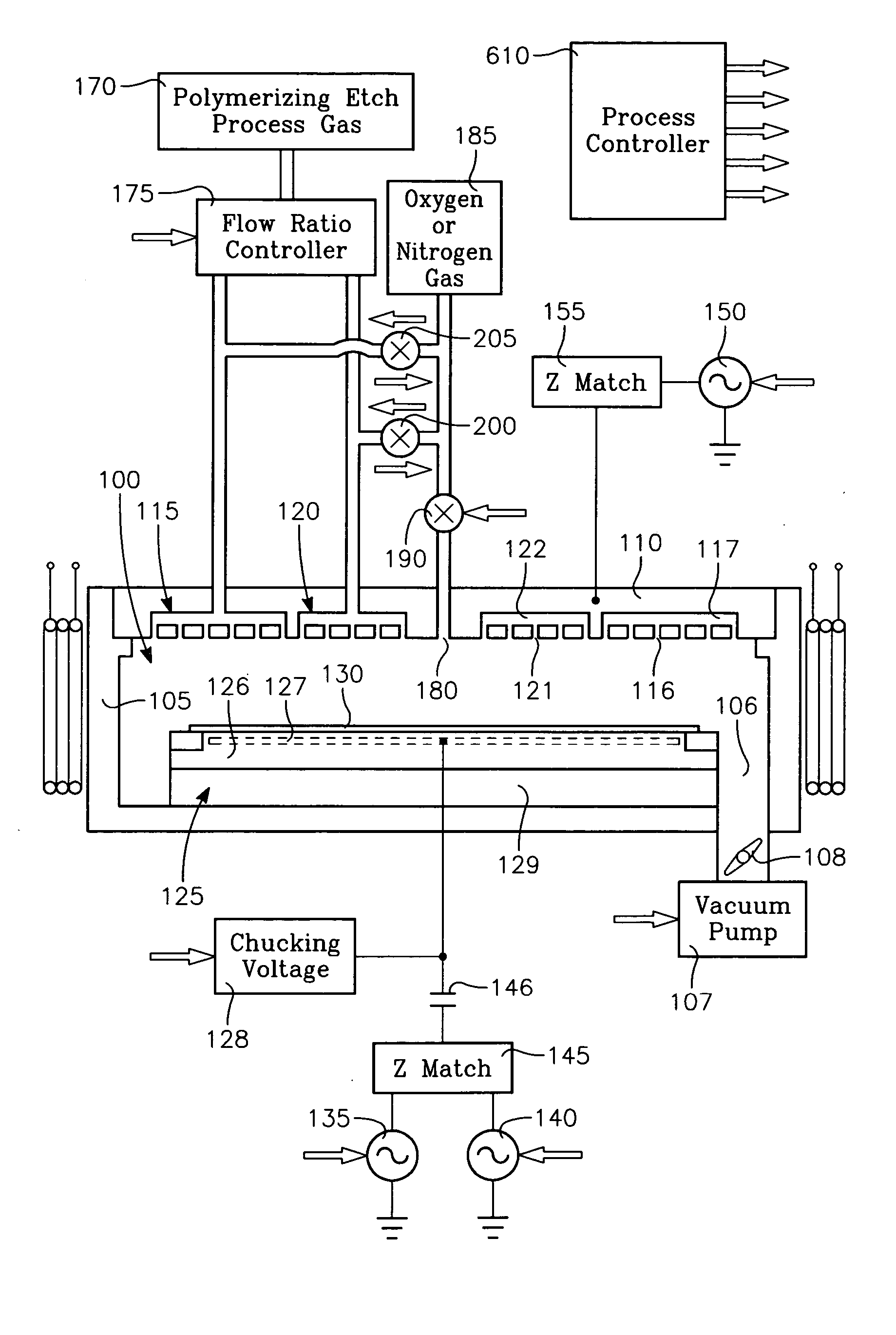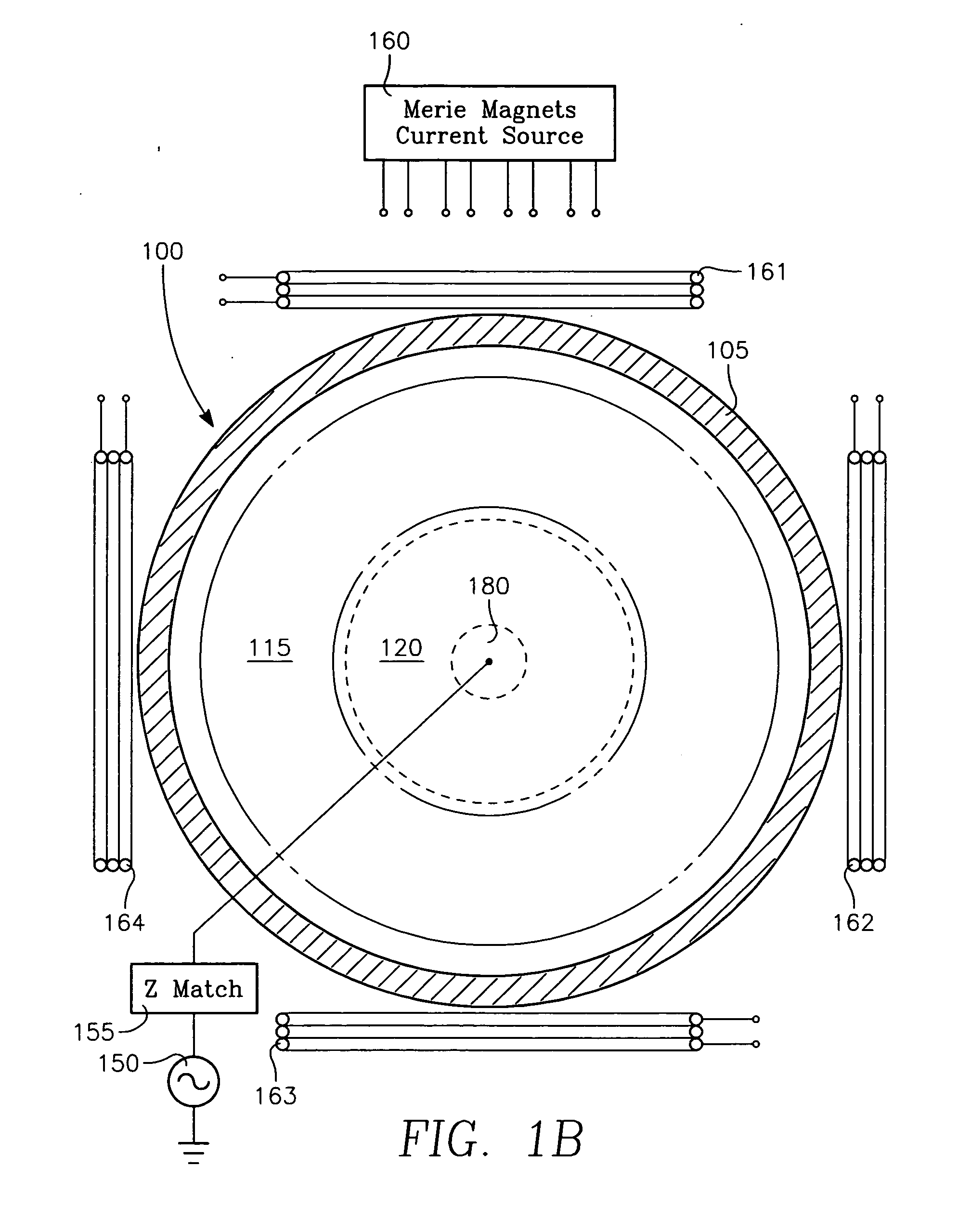Plasma etch process using polymerizing etch gases across a wafer surface and additional polymer managing or controlling gases in independently fed gas zones with time and spatial modulation of gas content
a technology of etching gas and wafer surface, applied in the direction of fluid pressure measurement, instruments, vacuum gauges, etc., can solve the problems of etch stop or taper profile unavoidable, low center etch rate, and worsening etch rate or etch profile non-uniformity, so as to reduce etch stop and increase etch rate, the effect of slowing down the polymer deposition ra
- Summary
- Abstract
- Description
- Claims
- Application Information
AI Technical Summary
Benefits of technology
Problems solved by technology
Method used
Image
Examples
Embodiment Construction
[0024] The present invention solves the problem of low etch rate in a region typically at the center of the wafer that has plagued capacitively coupled plasma etch processes for etching dielectric thin films. The invention is based upon our discovery that the problem can be completely solved without requiring any increase in etch process gas flow rate over the wafer center. It is further based upon our discovery that removing or slowing deposition of polymer on sidewalls and / or bottom of narrow openings at the wafer center during the etch process is an effective solution, rather than attempting to increase the etch gas flow rate at the wafer center. Finally, the invention is based upon our discovery that a gas such as oxygen or nitrogen which does not etch dielectric material, but which does remove polymer, is an essential part of this solution. The invention is realized by providing a novel independent gas injection orifice or zone, for example, at the center of the overhead electr...
PUM
| Property | Measurement | Unit |
|---|---|---|
| Flow rate | aaaaa | aaaaa |
| Ratio | aaaaa | aaaaa |
| Etch rate | aaaaa | aaaaa |
Abstract
Description
Claims
Application Information
 Login to View More
Login to View More - R&D
- Intellectual Property
- Life Sciences
- Materials
- Tech Scout
- Unparalleled Data Quality
- Higher Quality Content
- 60% Fewer Hallucinations
Browse by: Latest US Patents, China's latest patents, Technical Efficacy Thesaurus, Application Domain, Technology Topic, Popular Technical Reports.
© 2025 PatSnap. All rights reserved.Legal|Privacy policy|Modern Slavery Act Transparency Statement|Sitemap|About US| Contact US: help@patsnap.com



